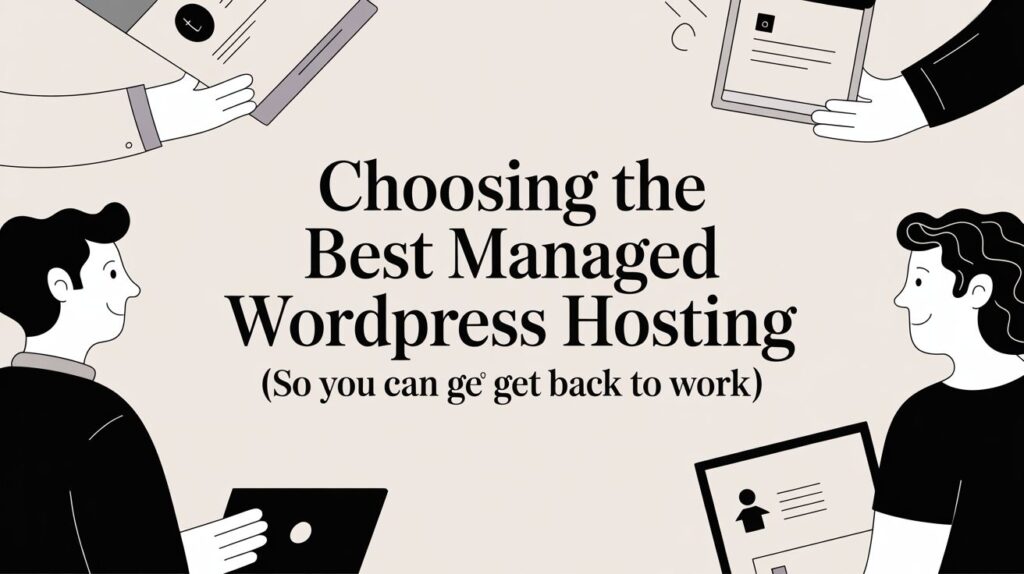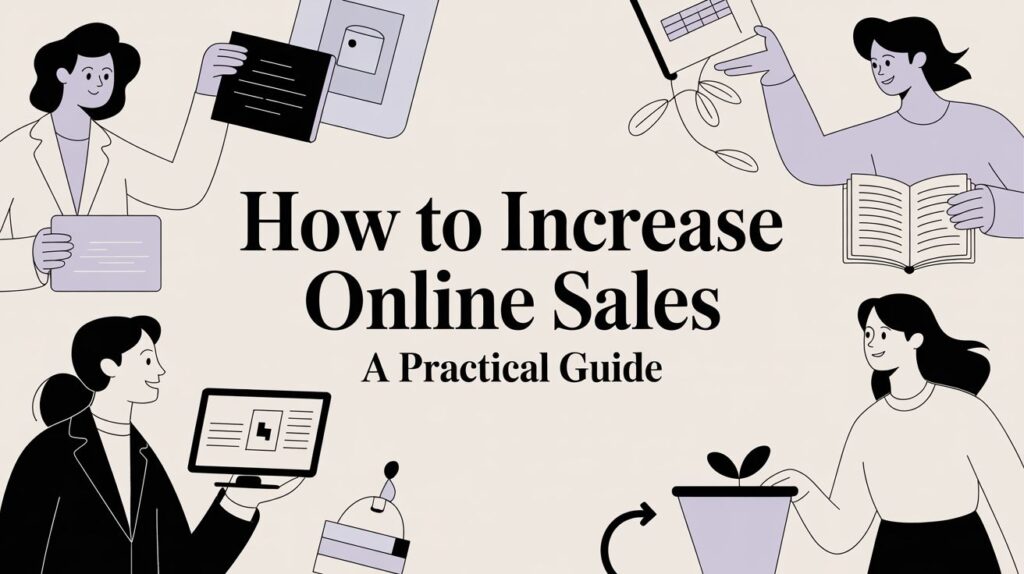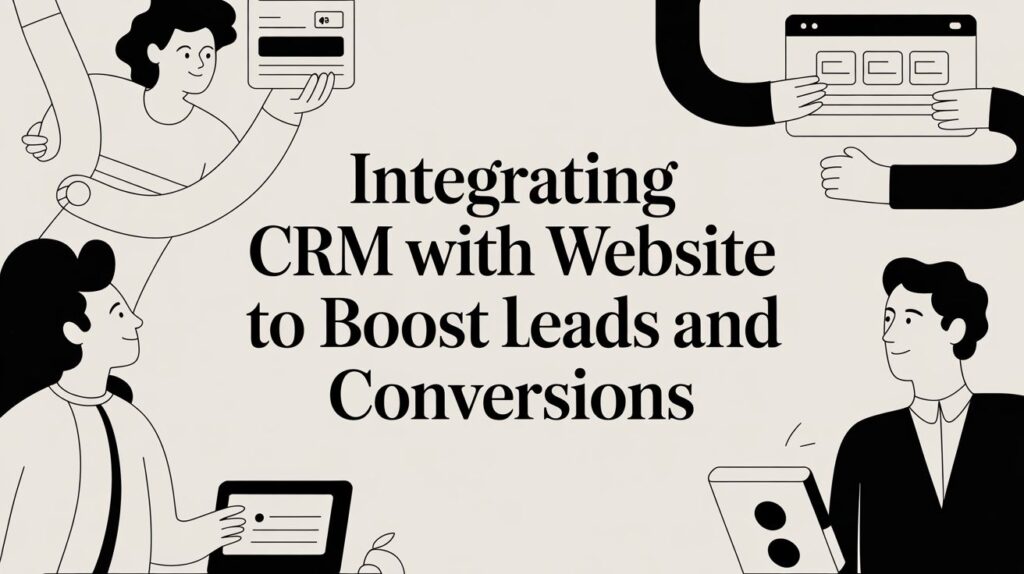12 Best Ecommerce Platforms for Small Business (2025 Review)
Choosing an ecommerce platform is more than a technical decision—it’s the foundation of your online sales operation. Your website shouldn't just be a digital brochure. It needs to be your hardest-working salesperson, your inventory manager, and your primary customer service hub, all working 24/7. Picking the wrong platform leads to lost sales, wasted time on manual tasks, and costly migrations down the road. This guide is built to prevent that. As a team that builds conversion-focused websites, we've seen firsthand what works and what becomes a technical roadblock for business owners. We’re not just going to list features; we’re going to explain why they matter to your bottom line. This is consultant-level clarity, helping you find the best ecommerce platform for your small business based on your goals, budget, and how much you want to tinker with technology. We'll break down the pros, cons, and crucial details for the top contenders. Each analysis explains who the platform is really for, what features actually impact profit, and the true cost of ownership. This isn't a surface-level review; it's a strategic guide to building a sales engine that drives measurable growth. Let's find the right tool for the job. 1. Shopify Shopify is the market leader for a reason: it's an all-in-one platform designed to get you selling with minimal technical fuss. If you want a powerful, reliable foundation that just works, this is arguably one of the best ecommerce platforms for small business owners who prioritize ease of use and a massive support ecosystem. It handles hosting, payments, marketing, and shipping, letting you focus on your products and customers. Core Features & Use Cases Shopify excels at unifying your sales channels. Its Point of Sale (POS) system integrates seamlessly with your online store, making it a no-brainer for retailers with both a physical storefront and a website. The built-in abandoned cart recovery is a simple but powerful tool for reclaiming lost sales, automatically reminding customers to complete their purchase. For businesses looking to scale, Shopify's robust analytics provide clear insights into store performance, while its vast App Store allows for endless customization. Even with its powerful SEO tools, you still need a solid strategy. Learn how to improve website rankings with a targeted SEO plan for maximum visibility. Pricing and Limitations Shopify offers several pricing tiers, starting with a "Basic" plan for new businesses, a "Shopify" plan for growing companies, and an "Advanced" plan for scaling operations. Pros: Excellent scalability, a deep app marketplace, and reliable 24/7 support. Cons: You'll face additional transaction fees if you don't use Shopify Payments. The cost of essential apps can also add up, increasing your total monthly expense. 2. WooCommerce For businesses already on WordPress, or for those who demand complete control and data ownership, WooCommerce is the standout choice. It's not a standalone platform but an open-source plugin that transforms your WordPress site into a powerful, fully customizable online store. This makes it one of the best ecommerce platforms for small business owners who want to avoid monthly platform fees and have the freedom to build a truly unique shopping experience. Core Features & Use Cases WooCommerce’s greatest strength is its boundless flexibility. Since it lives within WordPress, you gain access to unparalleled SEO capabilities and content management right out of the box. The platform is ideal for businesses with unique product models, like a contractor selling service packages or a consultant offering bookable sessions. It supports a vast array of payment gateways, giving you direct control over your transaction processing. If you are considering a move to this powerful platform, our website migration checklist can help ensure a smooth transition. Pricing and Limitations The core WooCommerce plugin is free, but the "total cost of ownership" is variable. You are responsible for your own hosting, security, and maintenance, which are ongoing expenses. Pros: Total design flexibility, full data ownership, and no platform-specific transaction fees. The massive ecosystem of extensions allows for nearly infinite customization. Cons: The freedom it offers comes with responsibility. Costs for hosting, premium themes, essential extensions, and security measures can accumulate. It has a steeper learning curve than all-in-one solutions. 3. Wix eCommerce Wix has grown from a simple website builder into a strong contender for businesses that want a visually stunning store without touching code. It's an all-in-one solution that bundles drag-and-drop design with core ecommerce functionality. For small business owners who prioritize creative control and an intuitive, all-inclusive platform, Wix eCommerce makes getting a professional-looking store online fast incredibly simple. Core Features & Use Cases Wix's primary strength is its highly flexible drag-and-drop editor, which gives you total design freedom. This makes it ideal for brand-focused businesses, such as artists, designers, or boutique shops, where aesthetics are critical to the customer experience. The platform supports the sale of physical and digital goods, services, and subscriptions, offering versatility for different business models. With built-in SEO tools and multichannel selling capabilities, you can manage your entire digital presence from a single dashboard, simplifying operations for busy entrepreneurs. Pricing and Limitations Wix offers several "Business and eCommerce" plans, starting with a basic tier for new stores and scaling up to more advanced plans with features like automated sales tax and dropshipping integrations. Pros: Extremely user-friendly with beautiful, modern templates. Hosting and customer support are included, offering great value for the price. Cons: It's less scalable for high-volume sales compared to dedicated platforms like Shopify. The best pricing requires an annual commitment, and costs from essential apps can increase your monthly total. 4. Squarespace (Commerce) Squarespace is the champion of design-forward ecommerce, making it one of the best ecommerce platforms for small business owners who prioritize brand aesthetics and simplicity. It’s an all-in-one website builder that seamlessly integrates powerful commerce tools, allowing you to sell products, digital content, and even memberships without sacrificing visual polish. If your business relies on a strong, curated visual identity, Squarespace provides a beautiful and intuitive canvas. Core Features & Use Cases Squarespace excels for businesses that
12 Best Ecommerce Platforms for Small Business (2025 Review) Read More »










